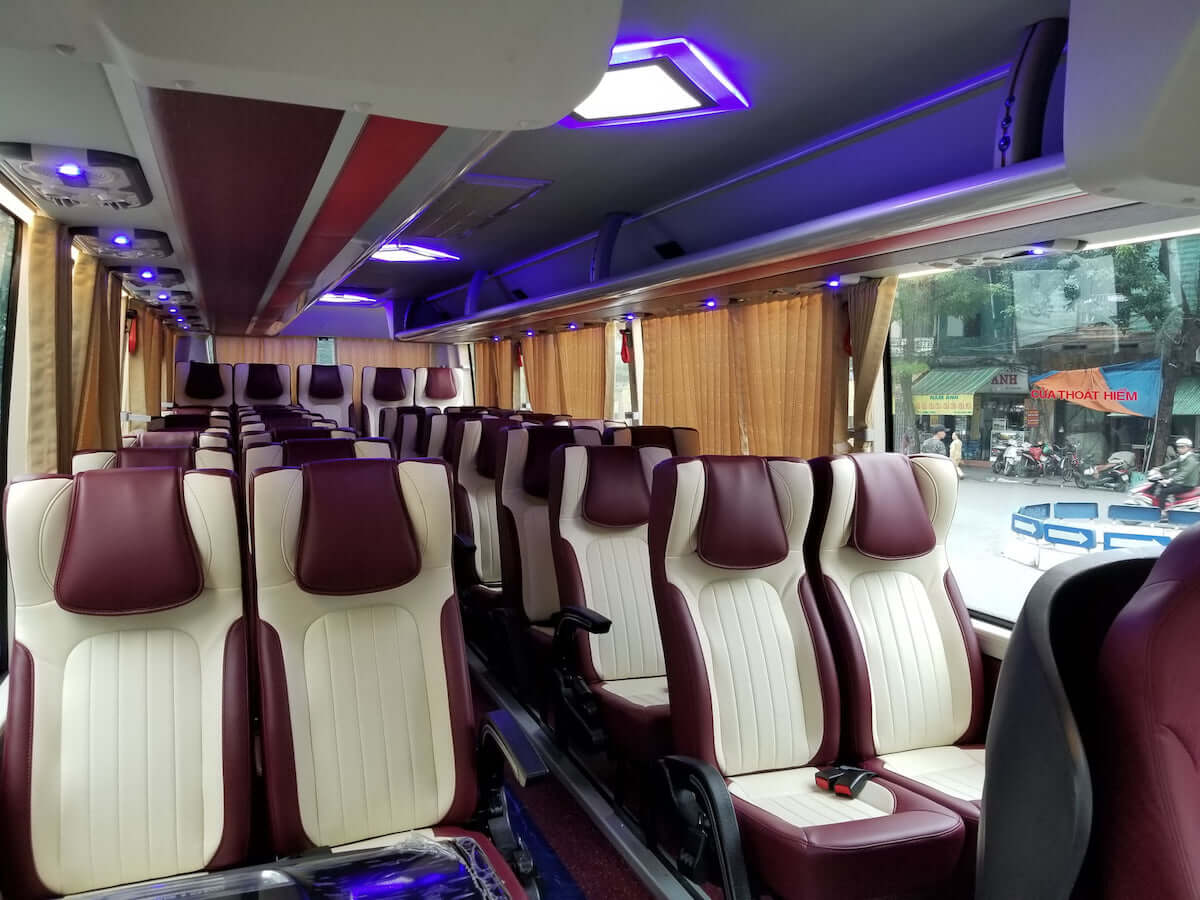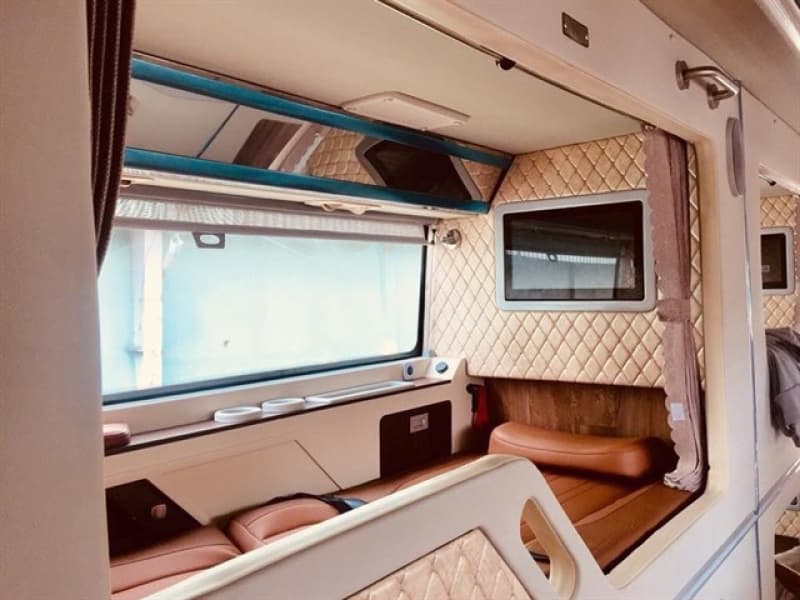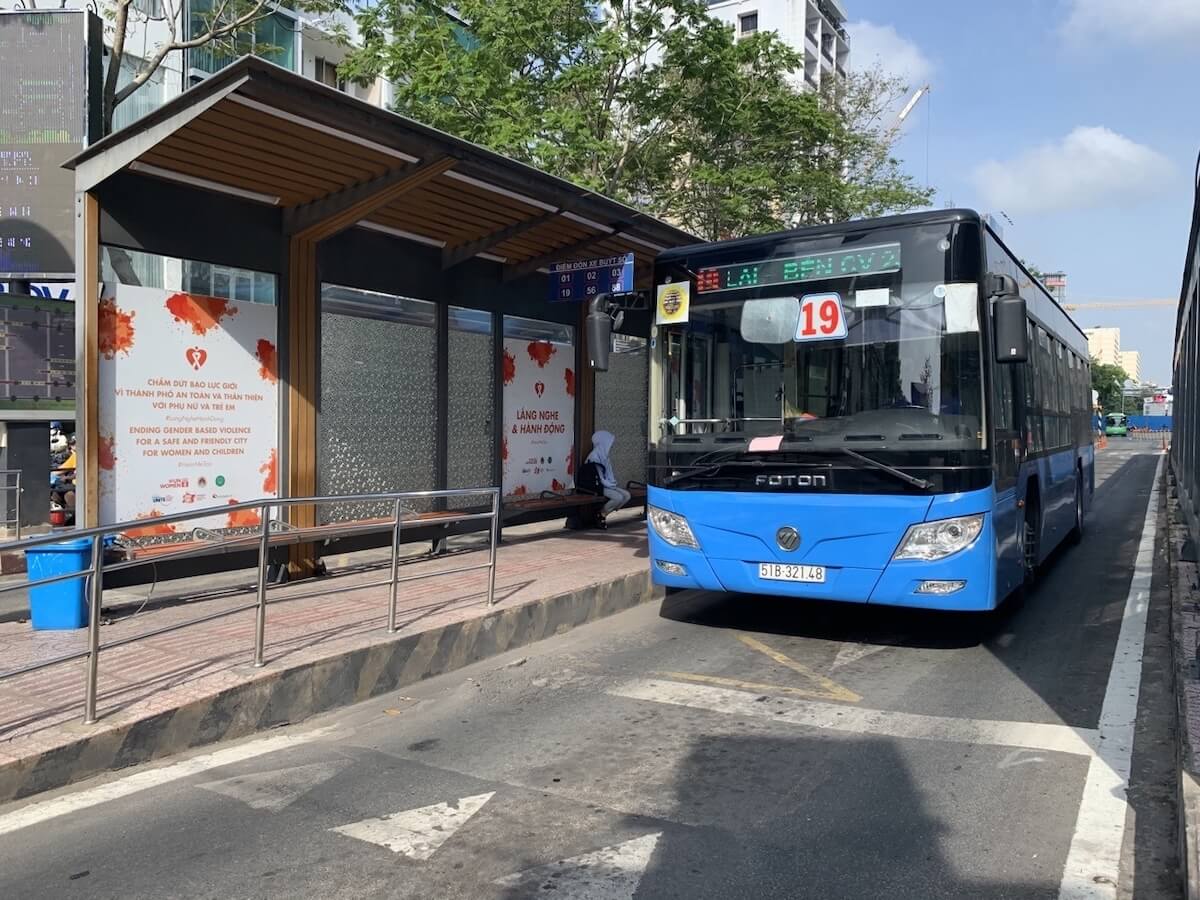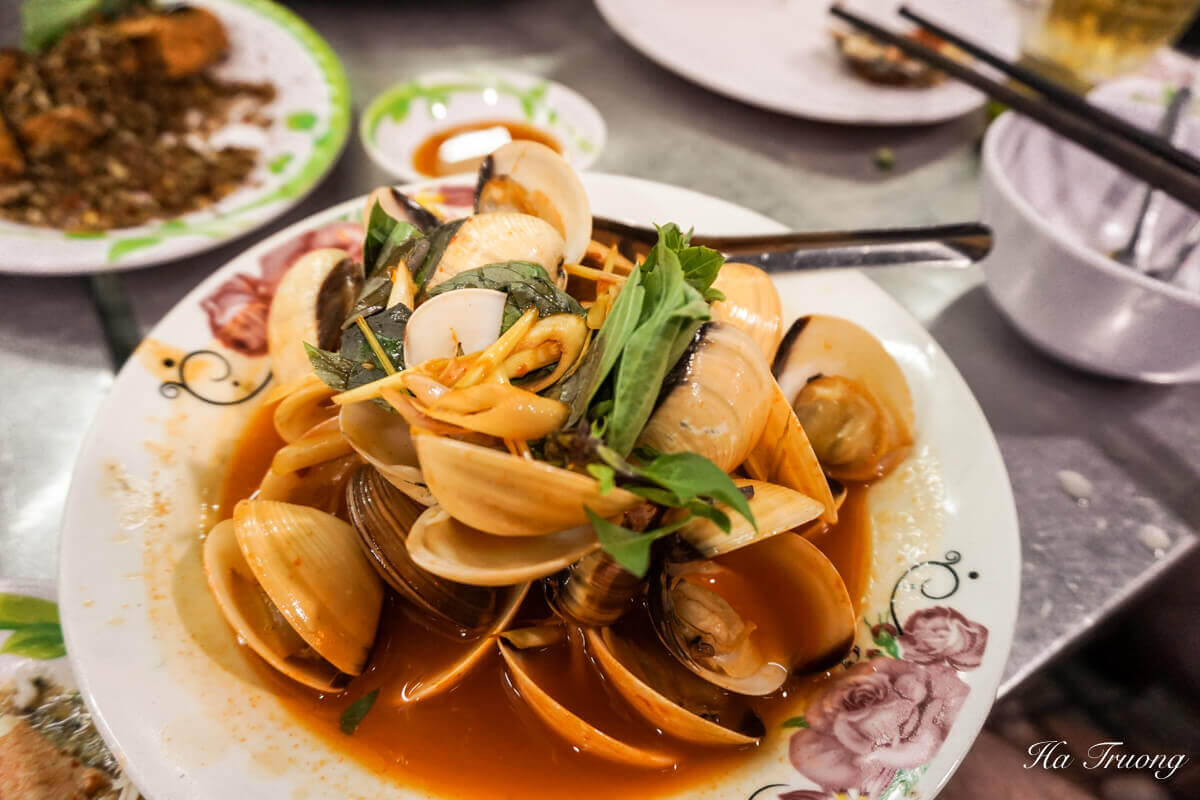Vietnam Bus Travel Guide: All You Need To Know
Traveling by bus is one of the cheapest and easiest ways to get around Vietnam. However, it can feel quite intimidating and confusing, and it’s a pain if you’re taking long bus rides.
If you’re planning to visit Vietnam and want to travel by bus, read this Vietnam bus travel guide for some tips that you should know.1
Where to buy bus tickets?
You can buy bus tickets online or at your hotel, bus station, or with a travel agent. I find it’s best to buy online as it’s more convenient and get the best prices.
Please note that during weekends or holidays in Vietnam, such as Tet Holiday, you should book in advance to guarantee that you’ll have your seats.
1. Online
I usually book my bus tickets online with 12go, a trusted transportation company.
Why you should book online
- Diverse, competitive fare. It’s easy to compare ticket prices without worrying about getting overcharged with “tourist prices.”
- Find a flexible departure time. With many departures, you can actively arrange your time and easily choose the right trip.
- Book your trip easily with confirmation procedures and highly secure and safe payment. You can book any time of the day—no need to stay up late to get tickets.
Tips for booking bus tickets online
- Check the correct name of the location. Vietnamese names can be confusing, and you don’t want to book your trip wrong.
- Check the drop-on drop-off points. Although many providers offer to pick up or drop off at your hotels, some don’t. Knowing this information helps you arrange your trip better.
- Each website can have different bus company availability, so check all of them if you need to.
2. At your hotel or travel agency
Another option that you can do is to book with a travel agency.
However, it’s challenging to find a legit travel agency because there’re many fake and copycat ones, so you may end up traveling on a bad-condition bus.
3. Bus stations
Bus stations usually offer reasonable prices for tickets, but they are usually located inconveniently outside the city center. Also, there’re lots of brokers that may harass and trick you into buying a higher price.
If you get to the bus station, make sure to go straight to the ticket office.
Bus types
There are four types of buses in Vietnam: seated buses, sleeper buses, minivans, and public buses.
1. Seated bus
Seated buses are usually for long-distance trips.
The large ones can carry 30 to 45 passengers, while minibusses can have a capacity of between 15 to 30 passengers.
Most seated buses offer air-conditioners, water, and cold towels.
You will see most of them with routes such as Hanoi to Cat Ba or vice versa.

2. Sleeper bus (night bus)
Recently, sleepers buses have become a popular choice for travelers for long-distance travel as it’s more comfortable than seated buses.
If you travel at night, I highly recommend sleeper buses.
Most sleeper bus has three rows with two floors with seats that can be raised or lowered with a button. They also have bottled water, refreshing towels, and air conditioning.
Some deluxe types have private cabins with curtains, pillows, soft leather seats, blankets, and wifi.

3. Minivans
Minivans, or limousines, generally cover short-distance travel. My most common trips with limousines take 2 to 4 hours, such as traveling from Ho Chi Minh to Vung Tau.
The most common minivans in Vietnam are Ford Transit and Hyundai Solati, with the interiors refurbished to accommodate seven passengers, nine passengers, or 12 passengers, depending on the model.

Also, the passenger seats are equipped with utilities such as soft leather seats that can recline for relaxation, reading lights, audio equipment, charging ports, entertainment, and ceiling light effects.
It’s usually quite pleasant to travel with minivans. They pick up and drop off at your hotel, and it’s faster than traveling by big bus.
However, some minivan drivers drive fast and carelessly, which can be a problem.

4. Public buses
Public buses run during the daytime and connect spots in the same city or neighboring provinces.
However, they are much less comfortable and usually difficult to predict when it arrives if you’re catching one in a small town.
Once, we had to wait almost an hour to catch a bus from Phan Rang to the city’s northern area.
Although they are not popular for travelers, you can save lots of money with them instead of taking a taxi.
For example, you can take a local bus to travel from Dong Hoi to Phong Nha (about 50 km) if you travel on a budget.
Tips: If you plan to take public buses in Ho Chi Minh, check the bus routes here.

What to pack when traveling by bus?
Here are a few tips to make your trip easier.
1. Pack light
Make sure you have two bags, one large for luggage and one smaller for purses, refreshments, and some common medications.
This will save you from having to find things in a large pile of luggage. Also, you’ll have more spacious and comfortable seats as you can store your luggage under the bus or on the roof.
2. Bring some snacks
Although long-distance buses will stop at certain points for customers to buy food or go to the bathroom, you may feel hungry at other times.
So, bring some snacks such as candy to eat when you feel hungry and recharge for the upcoming journey.
3. Bring a mask, earplugs, or earphones
If you’re catching an overnight bus or want to take a nap, just put on a mask and take a nap.
Also, bringing headphones and listening to soothing music relaxes and makes the journey feel shorter.
4. Bring hand sanitizer
Some stops don’t have sanitizer, so it’s better to bring your hand sanitizer and wet tissues.
5. Don’t forget water
Most bus operators often provide passengers with small bottles of water, but not every one of them.
Take the initiative to bring a bottle of water to drink when thirsty and avoid using carbonated soft drinks.
Rough roads and roadside foods combined with carbonated soft drinks can cause trouble for your digestive system.





